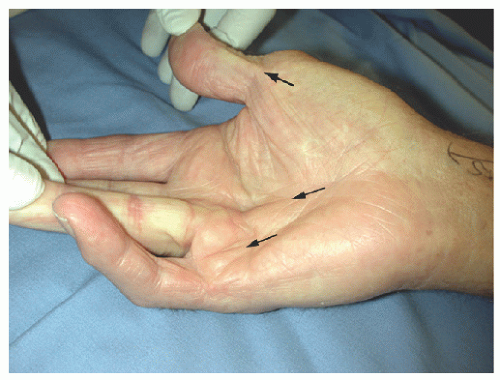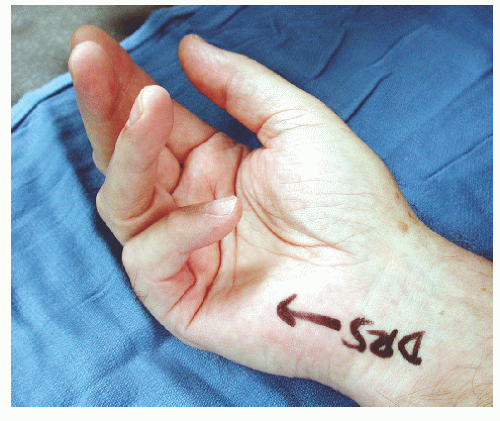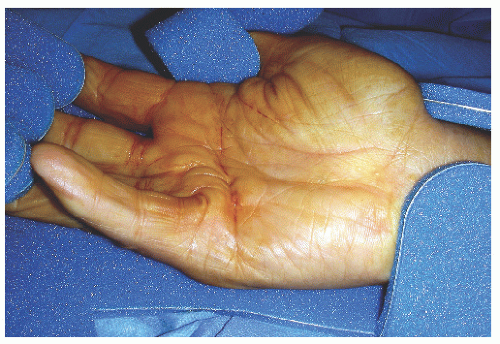Dupuytren Contracture
Nicholas T. Haddock
Stephan G. Pill
David R. Steinberg
CLINICAL PRESENTATION
Dupuytren contracture is a relatively common disorder of the hand that is characterized by progressive fibrosis and contracture of the palmar fascia. It most commonly affects middle-aged men of northern European descent and has been associated with tobacco use and alcohol intake,1 diabetes mellitus, and epilepsy. Although most cases are sporadic, an autosomal dominant form with variable penetrance exists. Patients with inherited forms are typically younger and may also present with plantar fibromatosis (Lederhosen disease) and penile fibrosis (Peyronie disease).
Initially, there is painless thickening of the palmar fascia that may go unnoticed. This thickening progresses to form nodules, which may cause transient pain that is usually self-limited. They coalesce into thick, longitudinal cords, causing a progressive loss of full extension and joint stiffness. The scarring process results in the formation of thick cords in the pretendinous bands of the palmar fascia that extend into the digits, skin dimpling, and flexion contracture at the metacarpophalangeal (MCP) and proximal interphalangeal (PIP) joints (Fig. 51-1). The ulnar side of both hands is involved in most patients, with the ring and small fingers usually affected earliest. Web space contractures can also occur, predominantly the thumb-index web space (Fig. 51-2). Patients usually complain of finger stiffness of the involved fingers. They may have difficulty placing their hand into a pants pocket or grabbing large objects.
CLINICAL POINTS
Complaints of stiffness of involved fingers are common.
The ulnar side of both hands is usually affected.
Disease may be acquired or inherited.
PHYSICAL FINDINGS
Dupuytren contracture is a clinical diagnosis based on the history of painless stiffness of the fingers and physical examination. An early sign is skin dimpling over the flexor tendon just proximal to the flexor crease of the finger. Passive extension of the affected fingers will exaggerate the dimple as the tendon courses over the head of the metacarpal. The nodules are visible or palpable, overlying the flexor tendons, and there may be thickening of the palm. The range of motion of the MCP and PIP joints is reduced, and a flexion contracture may be present. Bilateral involvement is present in about 50% of cases. More advanced cases may involve significant portions of skin (Fig. 51-3).
Differential Diagnosis
Flexor tenosynovitis
Diabetic cheiroarthropathy
Camptodactyly
Traumatic scars
Ulnar neuropathy/claw deformity
Volkmann ischemic contracture
Intrinsic joint disease
STUDIES (LABS, X-RAYS)
Laboratory tests and diagnostic imaging are not necessary, as the diagnosis of Dupuytren contracture can be made by taking a careful history and physical examination. Radiographs may be helpful in long-standing contractures to ensure that the joints remain in good condition.
 FIGURE 51-2. Multiple cords (arrows) involving the thumb, MCP contracture of the ring finger, and PIP contracture of the small finger. |











